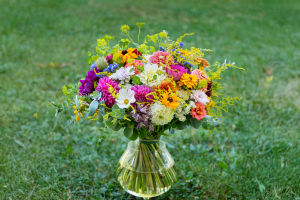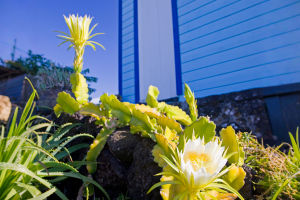Have you ever wondered why some plants thrive in bright, sunny windows while others seem to wither under the same conditions? Light plays a crucial role in the health of plants, but not all plants have the same light requirements.
Understanding how plants adapt to different light conditions can help us choose the right plants for our homes and gardens. Whether you're a seasoned gardener or a beginner, knowing how light affects plant health can make a world of difference.
In this article, we will explore how plants adapt to various lighting conditions, the importance of light intensity and duration, and how we can care for our plants based on their specific light needs.
The Role of Light in Plant Growth
Light is essential for photosynthesis, the process through which plants convert sunlight into the energy they need to grow and develop. But plants don't just absorb light—they need it in specific quantities and qualities. The intensity, duration, and spectrum of light all play vital roles in how well plants perform.
1. Intensity: The strength of light that plants receive. Some plants thrive in direct, intense sunlight, while others prefer soft, filtered light.
2. Duration: The length of time a plant is exposed to light each day. Some plants, like succulents, need more hours of sunlight to grow, while others, like ferns, thrive in low-light conditions.
3. Spectrum: Plants use different wavelengths of light for various processes. Blue light helps plants grow vegetatively, while red light encourages flowering and fruiting. This is why grow lights often have a specific spectrum for different plant needs.
How Plants Adapt to Different Light Conditions
Plants have evolved remarkable ways to adapt to varying light environments. These adaptations are vital for their survival, especially in their natural habitats where light conditions can fluctuate greatly.
1. Low Light: Plants that thrive in low light, like snake plants or peace lilies, have developed larger, darker leaves that can absorb more light. These plants have slower growth rates and are typically more tolerant of shade, making them perfect for areas with indirect sunlight or spots that only receive a little light each day.
2. Moderate Light: Many houseplants, such as pothos and philodendrons, prefer moderate, indirect light. They have adapted by developing smaller leaves or leaves that can withstand brief periods of direct sunlight. These plants need a balance of bright, indirect light and some shade to perform best.
3. High Light: On the other hand, plants like succulents, cacti, and herbs are native to sunny, open areas. These plants have evolved to store water and manage high light intensity, allowing them to thrive under direct sunlight for several hours a day. Their waxy leaves help prevent water loss, making them ideal for sunny windowsills or outdoor gardens.
What Happens When Plants Don't Get the Right Light?
If we place a plant in the wrong light condition, it can lead to a range of problems. Here are some common issues that arise:
1. Too Little Light: Plants that receive insufficient light may show signs of etiolation, which means their growth becomes spindly, weak, and leggy. Leaves may turn yellow or drop off. In some cases, the plant may stop growing altogether. Low-light plants will thrive in these conditions, but others may suffer.
2. Too Much Light: On the flip side, too much direct sunlight can cause leaf burn. Leaves might develop scorched patches or curl up to protect themselves from the excessive light. Some plants, like ivy or coleus, are particularly sensitive to too much sunlight.
3. Improper Light Duration: If plants are exposed to light for too long or not long enough, it can disrupt their natural circadian rhythms. This can lead to stunted growth, delayed blooming, or poor overall health. It's crucial to give plants the right balance of light exposure each day.
How to Care for Plants Based on Light Needs
Now that we understand how light affects plant growth, let's talk about how we can cater to different plant needs:
1. Assess Your Space: Before choosing plants, take a look at where you intend to place them. Observe how much natural light the area gets throughout the day. South-facing windows usually receive the most sunlight, while north-facing windows are the dimmest. East- and west-facing windows provide moderate light.
2. Match Plants to Light Conditions: Once you've assessed the light in your space, select plants that thrive in those conditions. For low-light spaces, consider ZZ plants or spider plants. For bright, sunny spots, cactus or aloe vera would be a great choice. For moderate light, pothos and dracaena are perfect.
3. Adjust Light Exposure: If your plants are getting too much light or too little, try adjusting their location. For example, you can move a plant that's suffering from too much sun to a shadier spot or vice versa. If you have limited natural light, consider using grow lights to supplement your plants' needs.
4. Rotate Plants Regularly: Plants that receive light from one direction (like near a window) should be rotated occasionally so that all sides get equal exposure. This helps prevent one side from becoming too leggy or leaning toward the light source.
Conclusion: Light Is Key to Healthy Plants
Light is one of the most important factors that influence a plant's health and growth. By understanding the different types of light—intensity, duration, and spectrum—and how plants adapt to these conditions, we can create the ideal environment for our indoor gardens.
So, next time you choose a new plant for your home, make sure to consider its light needs. With the right light, your plants will thrive, adding beauty and life to your space.


